Let me guide you through Havana, Cuba’s capital that took many people by storm. It’s basically a hurricane of fun, sun, and salsa.
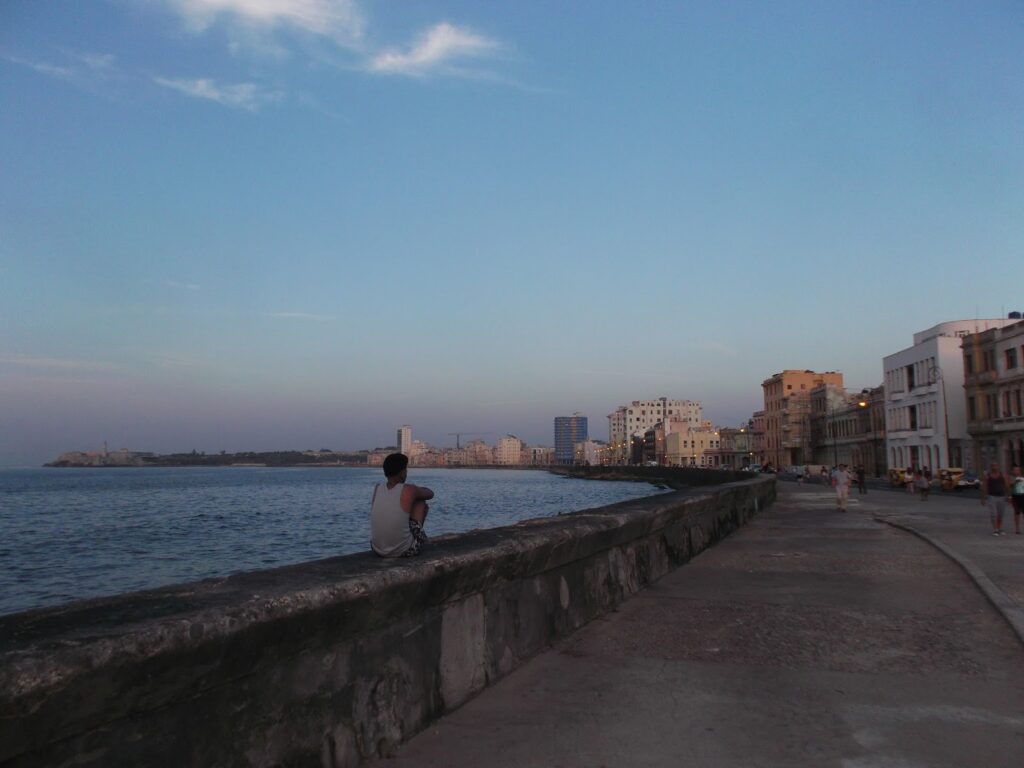
Well, I’m not dancing salsa. And I’m certainly not dancing salsa in Cuba where even a one-legged veteran sways way better than me.
So I’m focussing rather on the city by day.
Havana
Havana was one of the cities that conquistador Diego Velázquez de Cuéllar founded in the early 16th century. Eventually, it became the starting point for further conquests in the region.
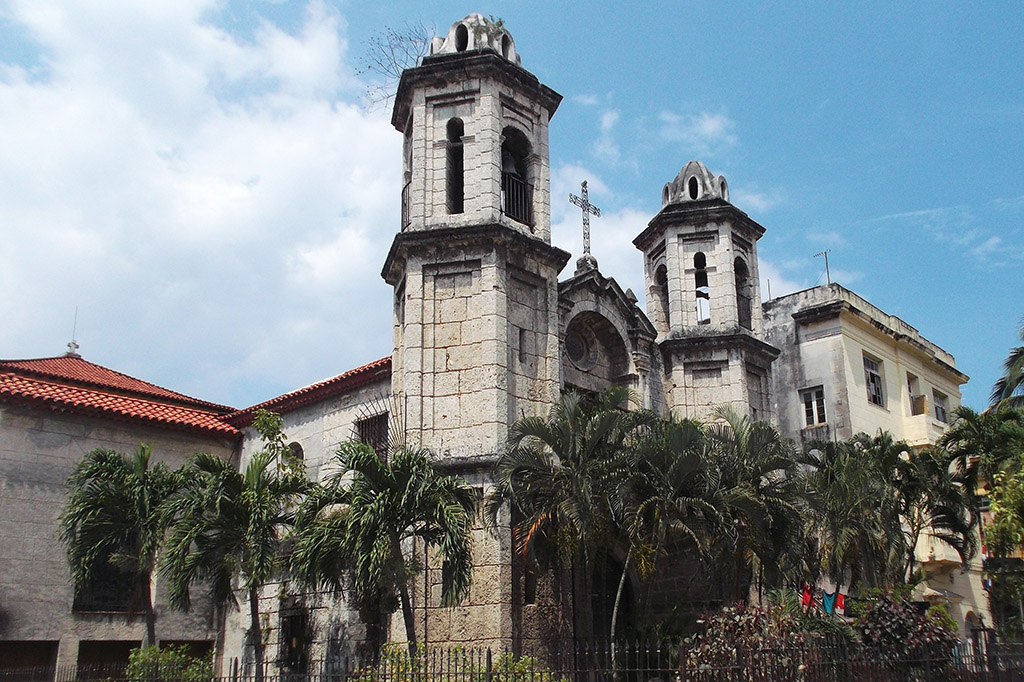
The city experienced a great boom in the 17th century. During this time, they erected many essential structures such as fortresses and churches. To build them, they used local materials such as wood and adapted the designs to Iberian as well as Canarian architecture.
In 1649, a third of the population died as a result of an epidemic brought in from the Colombian city of Cartagena. Notwithstanding, by the middle of the 18th century, Havana had more than 70,000 inhabitants. This made it the third-largest city in the Americas behind Lima and Mexico City, yet still ahead of Boston and even New York City!
Due to the steadily growing trade between the Caribbean and North America in the early 19th century, Havana quickly developed into a flourishing and elegant city.
Anyway, the prosperity of the Cuban middle class led to the construction of many representative villas and Cuba’s fame around the world.
The sinking of the USS Maine in the port of the city in 1898 led to the Spanish-American War. Consequently, Havana fell under US-American hegemony.
Under The Hegemony of The United States
This changed in 1902 as Tomás Estrada Palma became Cuba’s first President.
Between 1902 and 1959, the city experienced a new rise. Apartment blocks were built in Havana for the rapidly growing middle class.
In 1929, the Cuban Capitol – obviously, designed after the one in Washington – was inaugurated.
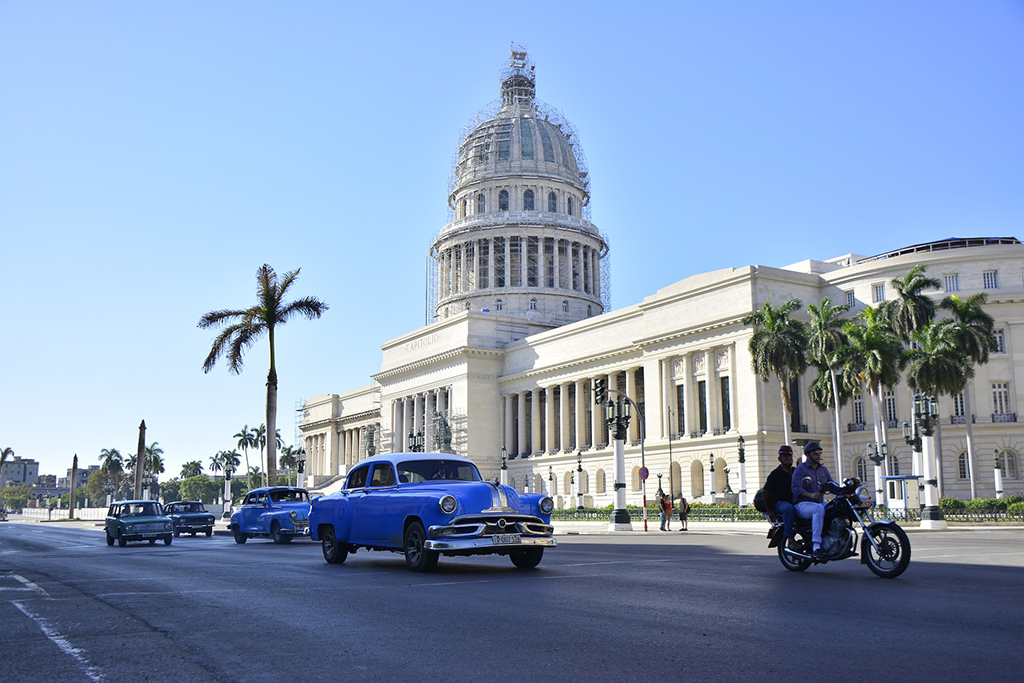
During the 1930s, countless luxury hotels, casinos, and nightclubs opened to accommodate the growing tourism, especially from the United States. Up to 300,000 US-American tourists visited Havana per year.
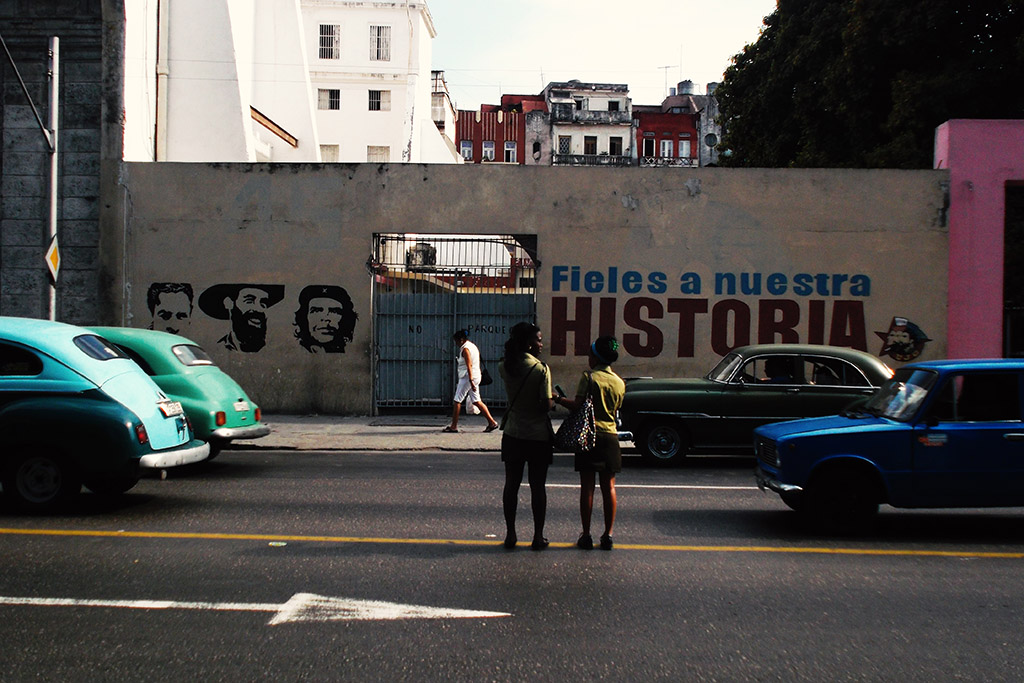
Some of those visitors were active in organized crime like for instance Mafia bosses Santo Trafficante, Jr. and Meyer Lansky. The latter ran the Hotel Habana Riviera at the time.
Nevertheless, Havana shone with its extravagance. From car races to all kinds of musical events, the city offered a wide range of entertainment. In the 1950s, Havana generated even greater income than Las Vegas.
Tables Turn
In March 1952, former President-Elect Fulgencio Batista overthrew President Carlos Prío in a military coup. Subsequently, he suspended important legal guarantees from the 1940 constitution, canceled elections, dissolved the Senate-House Congress, and proclaimed himself president. Although Batista promised to finally implement the social goals of the revolution of 1933, the difference between social groups grew. Also, he allowed the US to use the island basically as their house isle of pleasures. At the same time, the repressive character of his regime increased and discontent grew. Disappointment about Batista’s administration soon spread even among his initial supporters.
From 1956 on, the resistance organization Movement of July 26th led by Fidel Castro declared to overthrow Batista’s regime and restore the 1940 constitution including all basic democratic rights and land reform. Urban underground activists attacked in armed fights and the guerrilla army operated from the mountainous region.
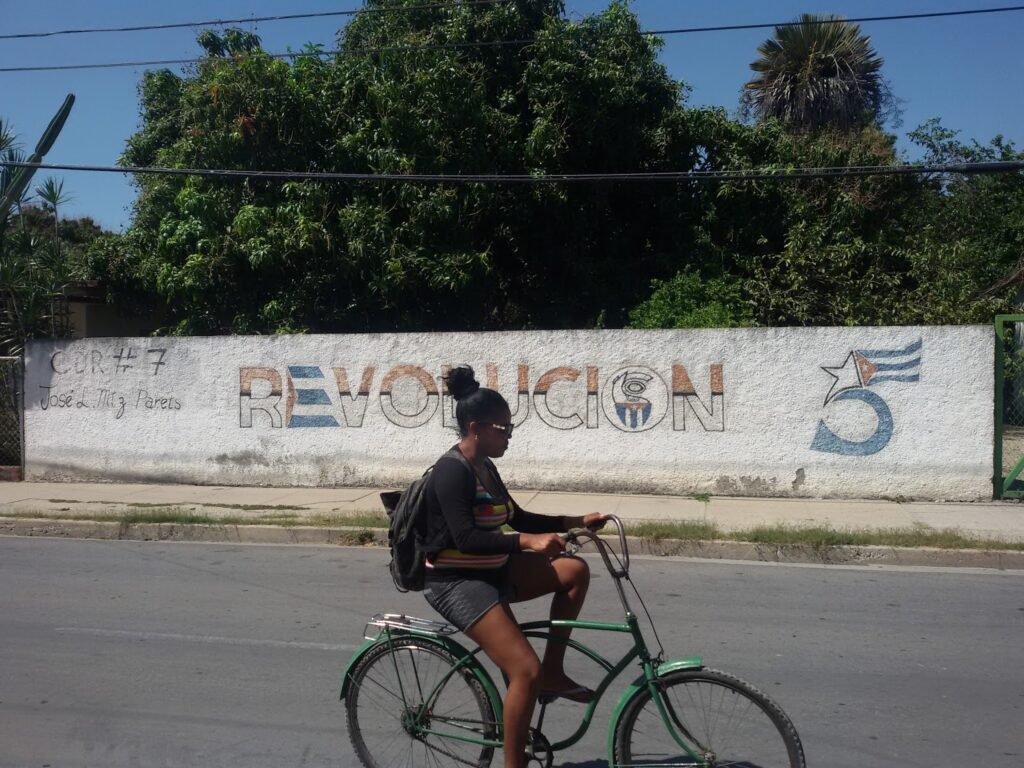
In the course of 1958, it was intensified and expanded continuously. Finally, it ended with Batista’s flight on January 1, 1959.
Between 1959 and 1961, a number of radical economic and social measures in line with the Marxist-Leninist ideology were taken.
Note: If you are a history teacher, you might find this outline somewhat simplified. It is. Also, my personal political opinion might shine through. Since this is mainly a travel post, the historical and political info is basic and in places not complete.
Havana Today
Since 1982, Havana’s old town has been a UNESCO World Heritage Site. International tourism finances remodeling and renovation. This industry has grown rapidly since the 1990s and is now one of the city’s most important economic sectors.

Havana is not only Cuba’s capital. It is also the country’s largest metropolis and home to more than 2 million people.
Although it consists of fifteen boroughs, most travellers stick to just three of them. The historic center Habana Vieja, the Centro, and Vedado, an upper-middle-class and administrative area.
Historic Center of Havana
La Habana Vieja is the shining diamond of the city, founded in 1519. In its area, there is also the port from which the Spaniards conducted their trade with America.

Four beautiful squares and over 900 buildings of historic relevance stand at Habana Vieja. The Plazas have now been completely restored.
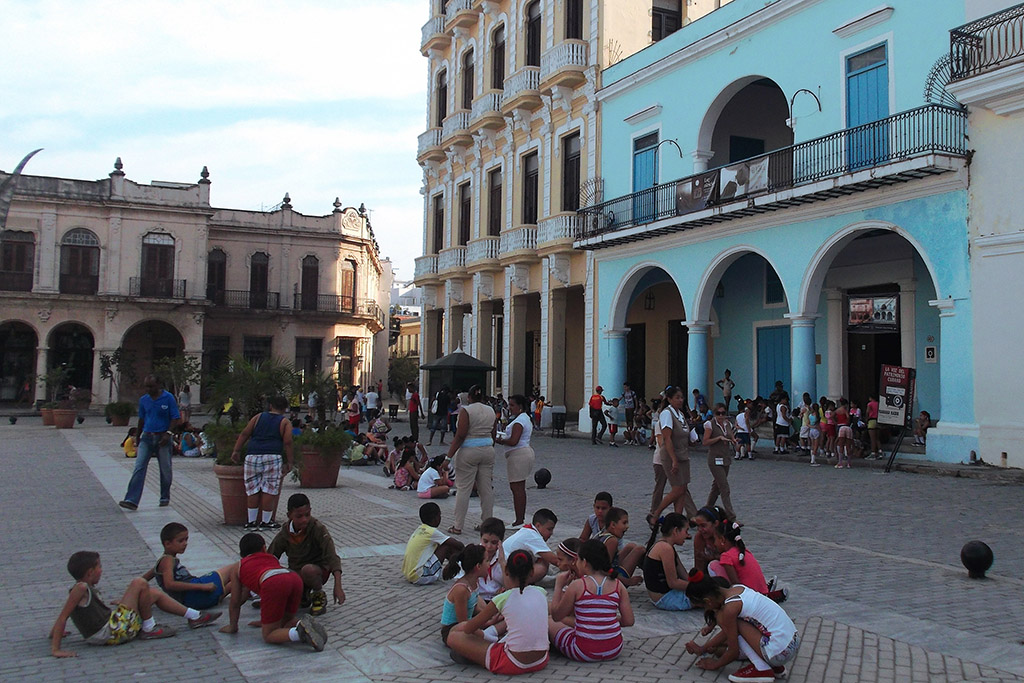
The squares Plaza Vieja, Plaza de la Catedral, Plaza de San Francisco, and Plaza de Armas had different purposes. A market took place on Plaza Vieja while the Plaza de la Catedral was the city’s religious center.
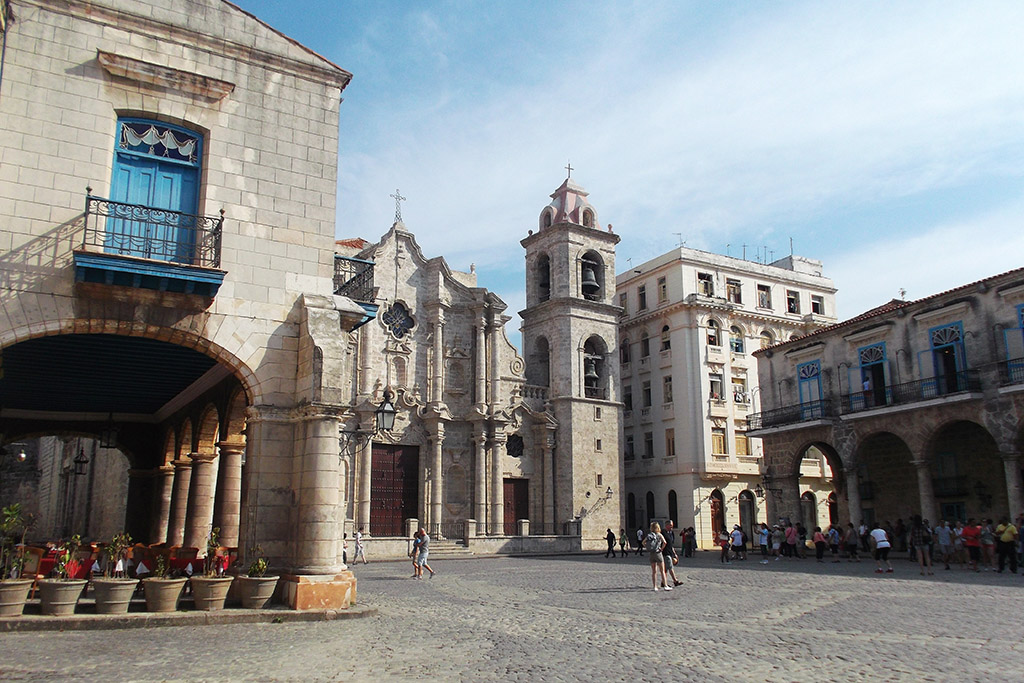
Military parades were usually held in the Plaza de Armas, while the Plaza de San Francisco was home to the most important Spanish shipyard. The squares are still being used as venues for various cultural events. The Plaza de Armas is having a book market.
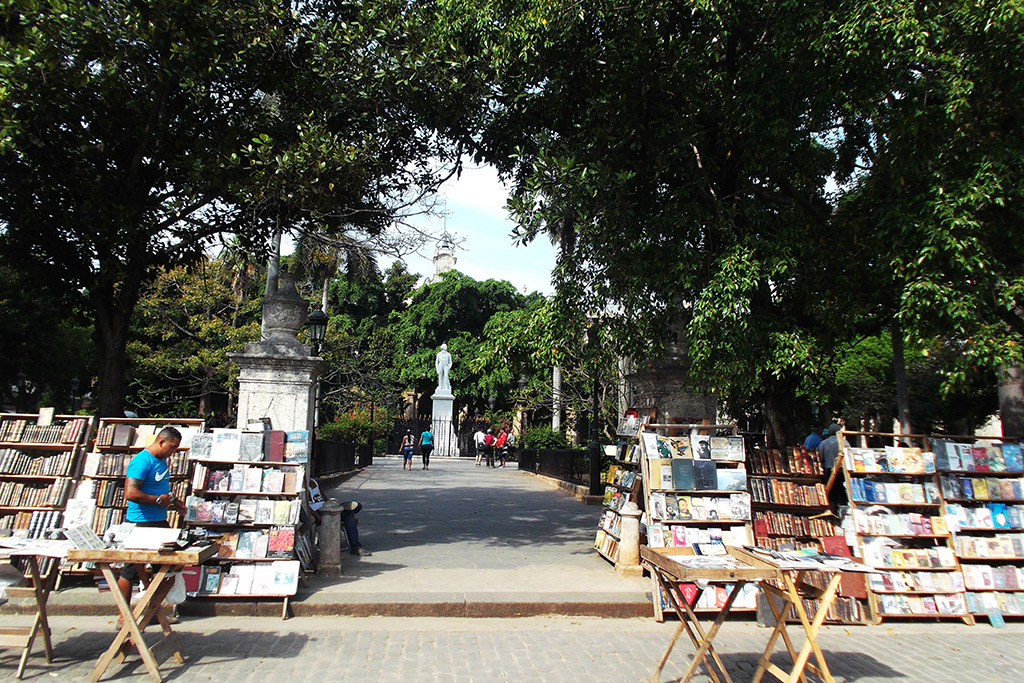
Obviously, there are also numerous museums in the historic neighborhood. There is for example the Museo de del ron on the history of Cuban rum production or a museum about Alexander von Humboldt. Particularly interesting are the Naval Museum Museo de Navegacion and the City Museum Museo de la Ciudad. This is actually a great place to learn more about Havana’s colonial past also from furniture, personal items, and photos.
Walls Come Tumbling Down
Although parts of the historic center are well maintained, other parts are rotten and crumbling to a scary degree.
I normally don’t mind rotten. However, I wouldn’t like a disintegrating building to bury me.

My highlight of rotten was when I – together with many, many other people – was walking down the street and all of a sudden there was a deafening noise. No big deal, just a balcony (!) that crashed down on the sidewalk.
Yes, I kid you not: A concrete balcony crashed on the sidewalk!
Since God likes Cubans and doesn’t want anybody to get in trouble, nobody got hurt.
Take A Hike
To explore the historic center you might want to walk down south along Calle Obispo. Rows of really beautiful houses line this pedestrian street. There are cafés and small shops and it’s cute. However, it has very little to do with real Cuban life.

At the Plaza de San Francisco you might want to turn right into Calle Amargura to either visit the Museo del Chocolate. Alternatively, you can sample Cuban chocolate products – including some very rich hot chocolate – at the Casa del Chocolate. Obviously, you can opt for both.
Art And Streetart
If you turn left into Calle San Ignacio and follow the street all the way south, you’ll get to the Mercado Artesanal. This is a dorado for those who enjoy Caribbean handicrafts and art in bright colors.

Just so you get to see another street with similar buildings, walk back up on Calle Cuba. Turn right at Calle Muralla which takes you to one of the most important squares in Habana Vieja, the Plaza Vieja.

To get from Plaza Vieja to the Plaza de la Catedral, walk six blocks up on Calle Mercaderes.
Across the Marqués de Arcos mansion is a mural depicting 67 historic Cuban celebrities. This mosaic of 300 square meters was designed by Andrés Carrillo. To create his work, the artist soaked natural rock in acrylic resin to manufacture the small tiles in 13 shades.
By the way, to the left, on Calle Empedrado is the legendary Bodeguita del Medio. To those who love these clichés: Be their guest – cheers.

Of course, there are more plazas and rincones – which translates to corners – and shops and bars all over Habana Vieja.
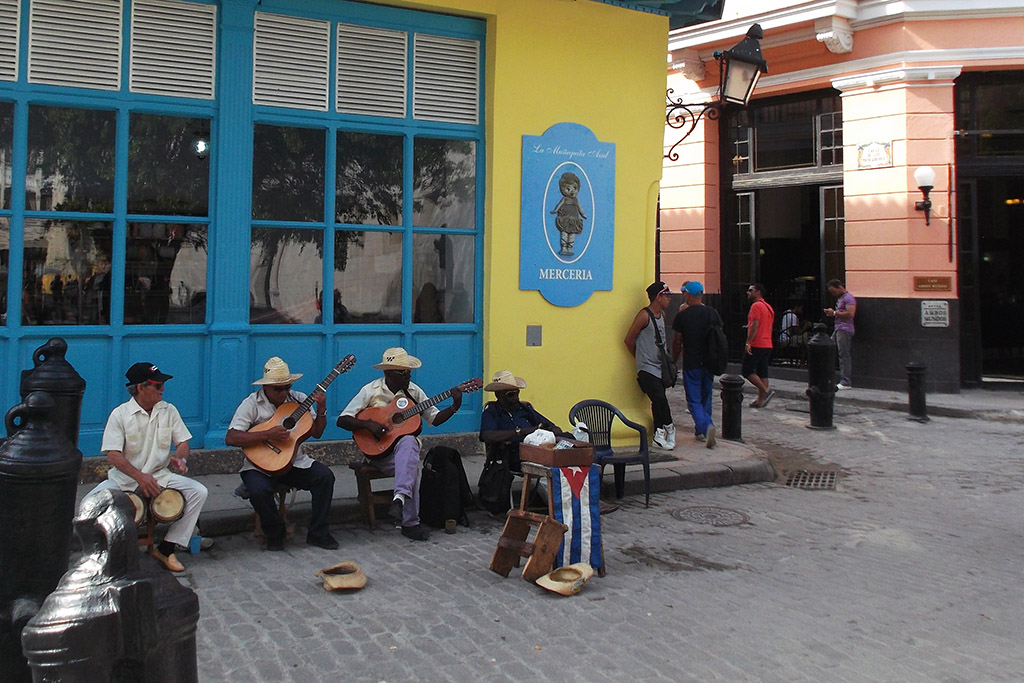
One can spend easily one to two days just walking and immersing.
Center of Havana
The Centro, which, obviously, translates to center, covers an area of about 3.5 square kilometers. It stretches west of the Prado along the Malecón to the Vedado neighborhood.
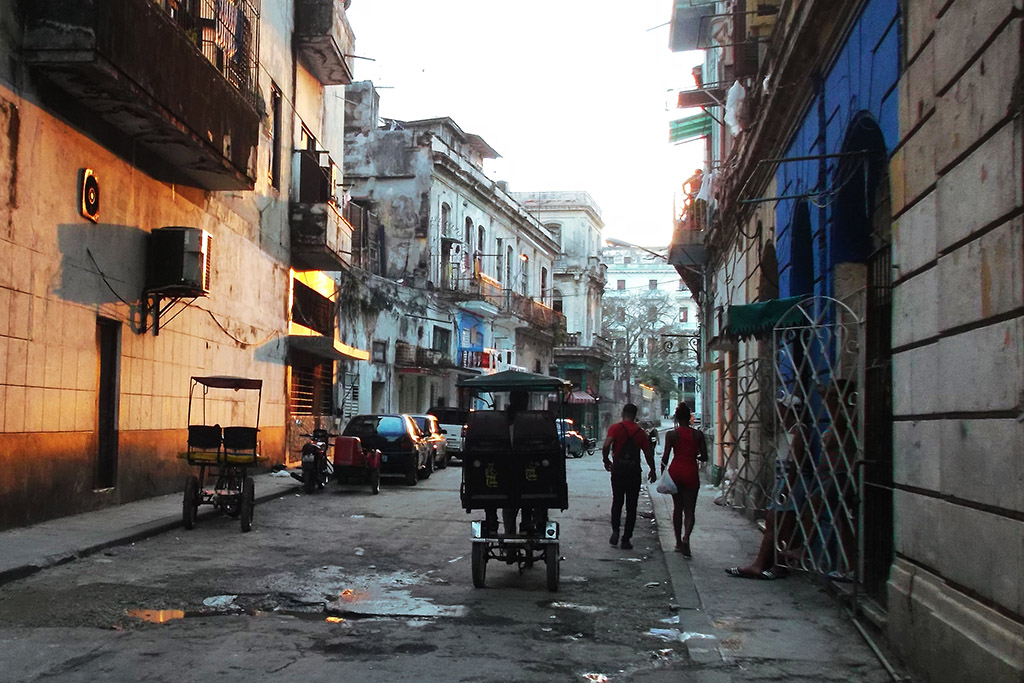
With the beginning of colonization in the 16th century, there were already some settlements in the area of today’s center. However, it gained greater importance only from the middle of the 18th century as a result of the economic liberalization during Cuba’s British occupation.
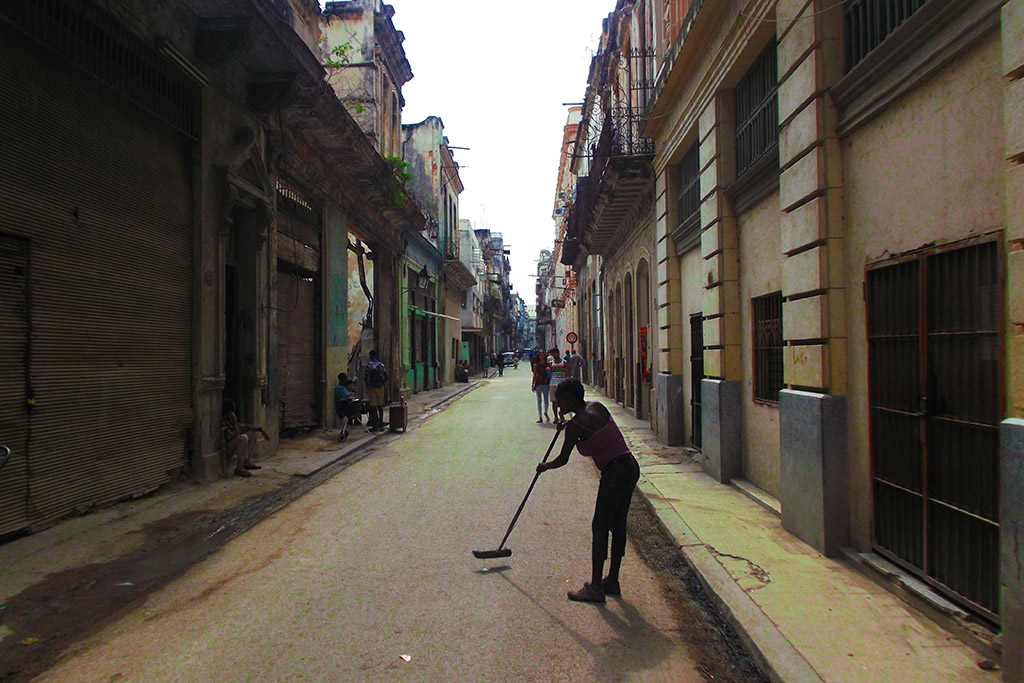
At the end of the 19th century, Chinese immigrants settled in the area around Calle Zanja and Calle de los Dragones. They opened various businesses and the Barrio Chino developed into one of the most important Chinese communities in the Americas.
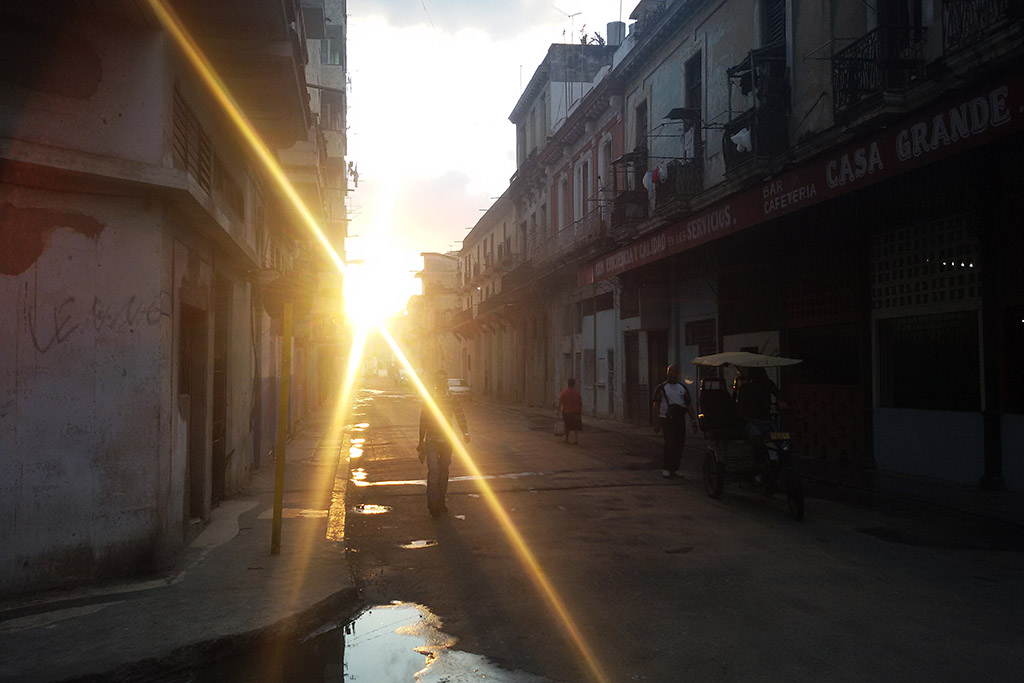
Although there are not many landmarks that might be relevant to international visitors, the Centro is Havana’s commercial center. Also, along the traditional Neptuno shopping street, smaller private businesses and shops have increasingly emerged in recent years. They definitely enhance the attractiveness of the center.
A truly funky place in Havana’s Centro is the Callejon de Hamel. It is already bordering the Vedado district I’m introducing below.
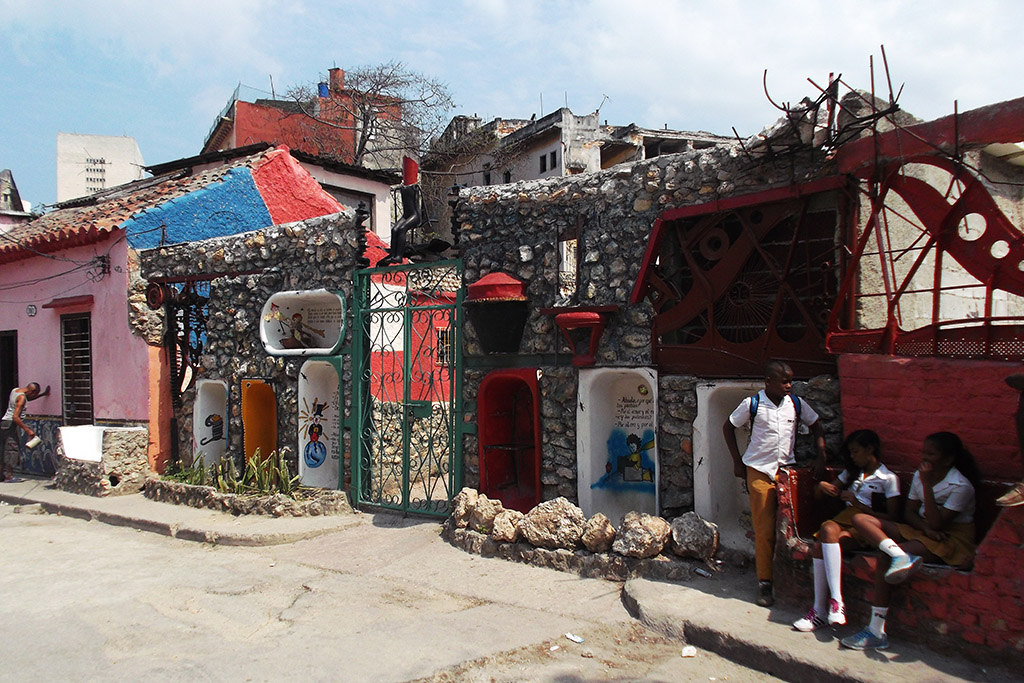
Many Cuban artists use the scarceness of material to their favor and create their work in an impressively ingenious way with what’s just available. When they decorated the Callejon, there must have been lots of bathtubs available, because they used them lavishly.
Prado and Malecón
Havana’s most striking boulevard is the Paseo de Martí, also known as the Prado. It was constructed in the late 18th century.
Alongside the Prado, one of the most imposing structures is the Capitolio that I’ve already introduced above. At the next corner is the Gran Teatro de La Habana. Built in 1838, it is actually the oldest active theater in Latin America and one of the most magnificent. It is also the seat of the famous Cuban national ballet.
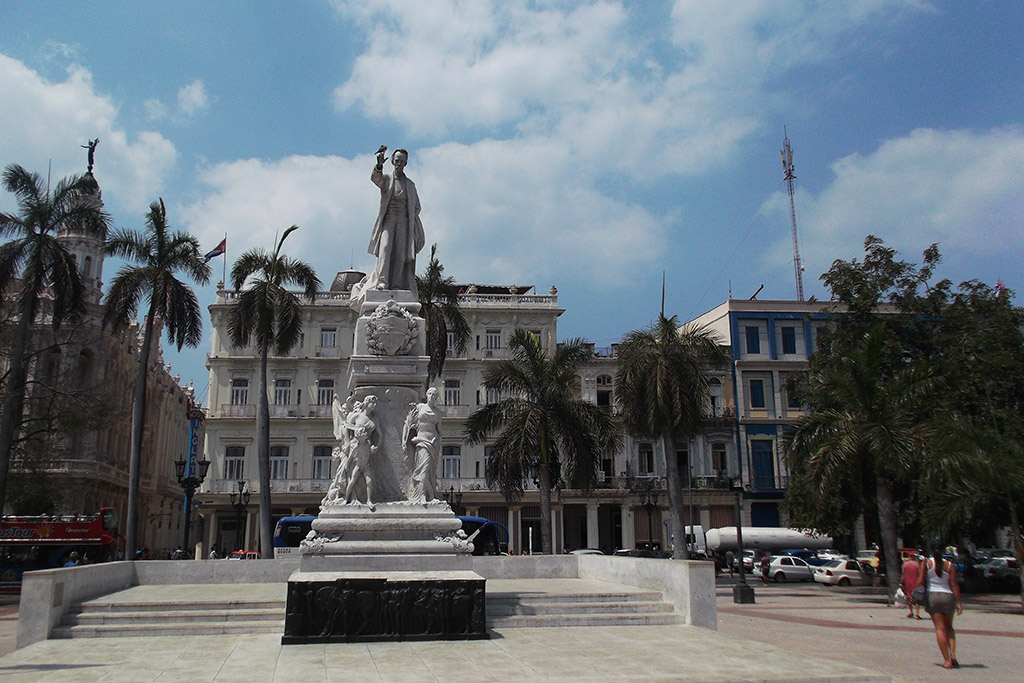
Havana’s first hotel, the neoclassical Hotel Inglaterra, which opened in 1856, is located next to the theater.
Museums
Museo Nacional de Bellas Artes
I’m a culture vulture, hence, I visited also the Palacio de Bellas Artes. I had the impression that hardly any tourist visits this grand art venue.
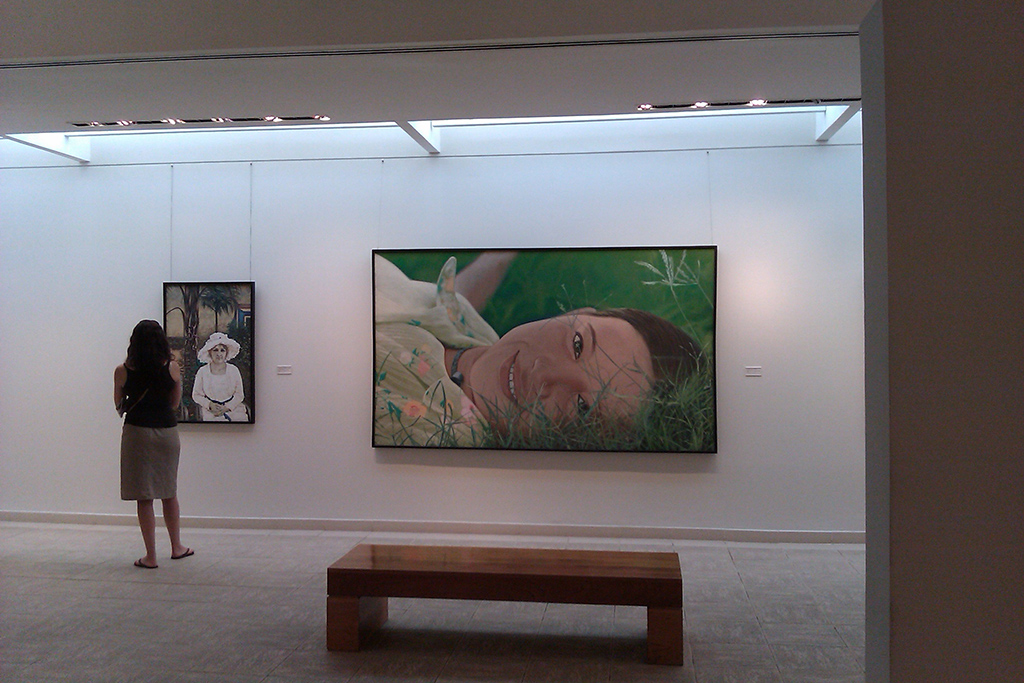
(Photo: Dkoukoul, Painting of a smiling female, CC BY-SA 3.0)
Albeit, the Museo Nacional de Bellas Artes is considered one of the best art museums in the Caribbean. It shows international and Cuban art on over floors. Seeing works by Cranach, Tischbein, Reynolds, Sorolla, and many other internationally renowned artists at this gallery is just amazing.
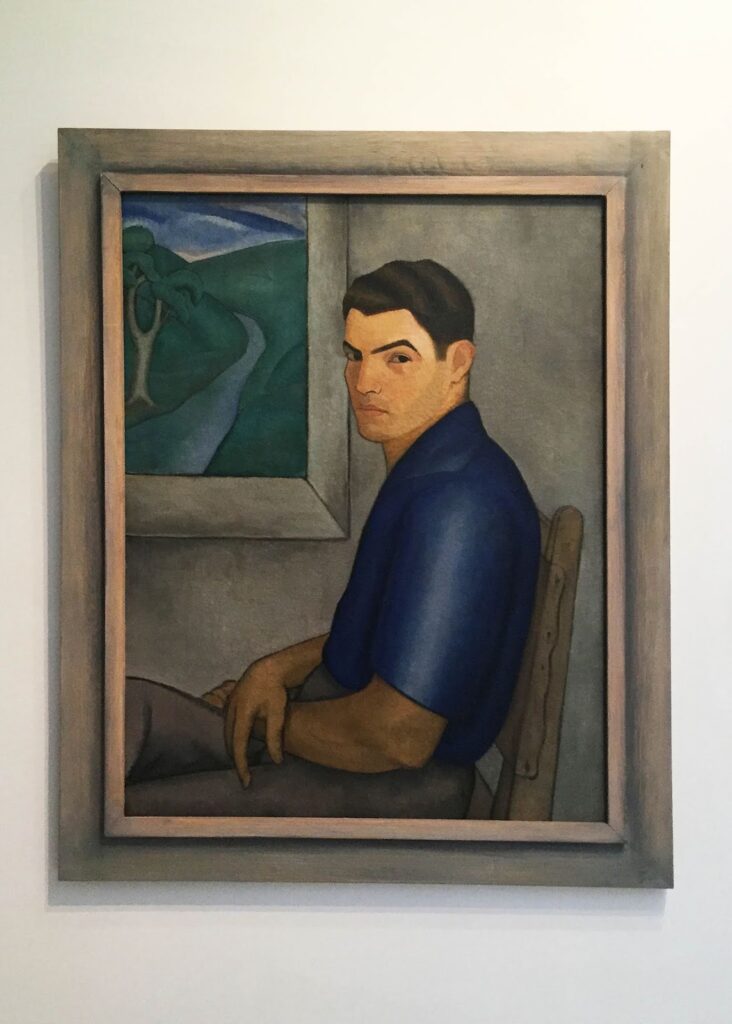
(Photo: Caseyjd, Selfportrait of Jorge Arche, straightened and trimmed, cropped to 5:7, CC BY-SA 4.0)
However, my favorite works are by those exquisite Cuban painters such as Jorge Arche, whose work would be considered The New Objectivity. Marcelo Pogolotti’s modernistic, Bauhaus-ish paintings glorify the working class while pop-artist Raúl Martínez’ painted Popart in expressive, bold colors, to point out only a few.
How To Visit
Locals can visit the Palacio from Tuesday to Saturday from 9 a. m. to 5 p. m. and Sundays from 10 a. m. to 2 p. m. for 5 CUP while foreigners pay 5 CUC.
The same ticket grants access to the older building, the Sede de Arte Universal section. It is located next to Parque Central. Its main focus is on international art. However, the most picturesque part is the beautifully painted ceiling that slowly falls apart. Through the gaps, you can actually see the sky and birds nesting on the wall’s edges. It’s sort of morbid beauty, thus certainly not on purpose.
No Pictures!
What’s really annoying is that there is neither a good catalog of the vast permanent collection nor a selection of for instance postcards or brochures. For some time ago, they at least installed a very informative website. Apart from general visitor info, you find also comprehensive info on all the works and artists.
As a matter of fact, taking pictures is strictly forbidden.
Actually, in every hall, there is at least one guard who barks loudly “no pictures” as soon as you look at your phone to check the time. They bark it with a heavy Spanish accent which makes you feel like a villainous contra.
I remembered these good people very often on my trip through Cuba. For instance, every time I had to wait for hours at an Etecsa office to buy an internet card. Most of the time, there was one single person sitting there moving very, very, very slowly, taking shorter or longer breaks for no apparent reason. Or the time when I almost missed my intercity bus. The one and only lady supplying passengers with tickets had to have her lunch that very moment.
As a matter of fact, I often realized those offices were not understaffed because there is no labor force in Cuba. The labor force is simply distributed very unreasonably.
I know that this was – and obviously still is – a problem in socialist countries. Yet, I don’t understand why, since it has nothing to do with the system itself. Marx didn’t command that there ought to be many people uselessly barking at museums while important and frequented institutions such as the post office and the bus company should remain understaffed, did he!?
Museo de la Revolución
Talking about museums – there is, of course, the Museo de la Revolución everyone should visit. Guess what I’ve learned there: La revolución was a good thing. Also, the boyband around Fidel were good and brave people. Go figure.
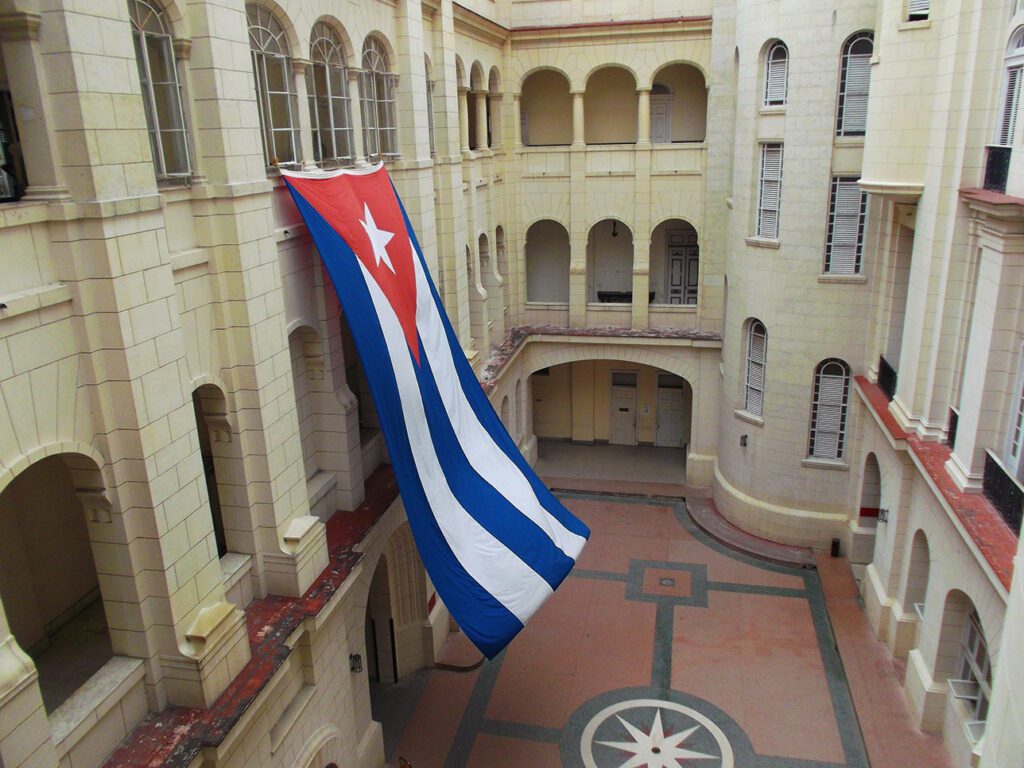
As a matter of fact, regarding what was going on during Batista, of course, it was right to change things. Granting people free healthcare and giving them access to profound education is fundamental. As we all know, Cubans have much less access to information and to certain literature. However, they are impressively educated and well-informed.

It’s just annoying that the information at the museum are not very balanced and the red flag is hitting you right in your face. The crude propaganda really adds a caricaturesque feel to the exhibits. It’s a shame since the exhibition as such is really informative and interesting.
The museum can be visited every day from 9.30 a. m. to 4 p. m.
Around the museum are more memorials like the Granma. This yacht brought revolutionaries from Mexico to Cuba. By the way, today, the official newspaper of the Central Committee of the Cuban Communist Party is named after this old lady.
Art Nouveau District
Before you leave the Prado area, walk down south to Calle Cárdenas.
Here, you’ll spot some true architectural treasures. An astonishing variety of Art Nouveau houses bring immediately Antoní Gaudí’s building to mind. Hence, it’s not surprising that these gems also stem from a Catalan, namely Baltazar Ustrell. Recently the City Historian’s Office has finally begun restoration works on some of these gems.
Although the entire Calle Cárdenas is like an outdoor museum, the houses numbered 101, 103, 107, 159, and 161 are particularly intriguing. These houses by Catalan architect Mario Rotllant have delightful details. There are side windows shaped like leaves, stained glass features, exquisite wrought-iron balconies, and carved doors with delicate floral motives.
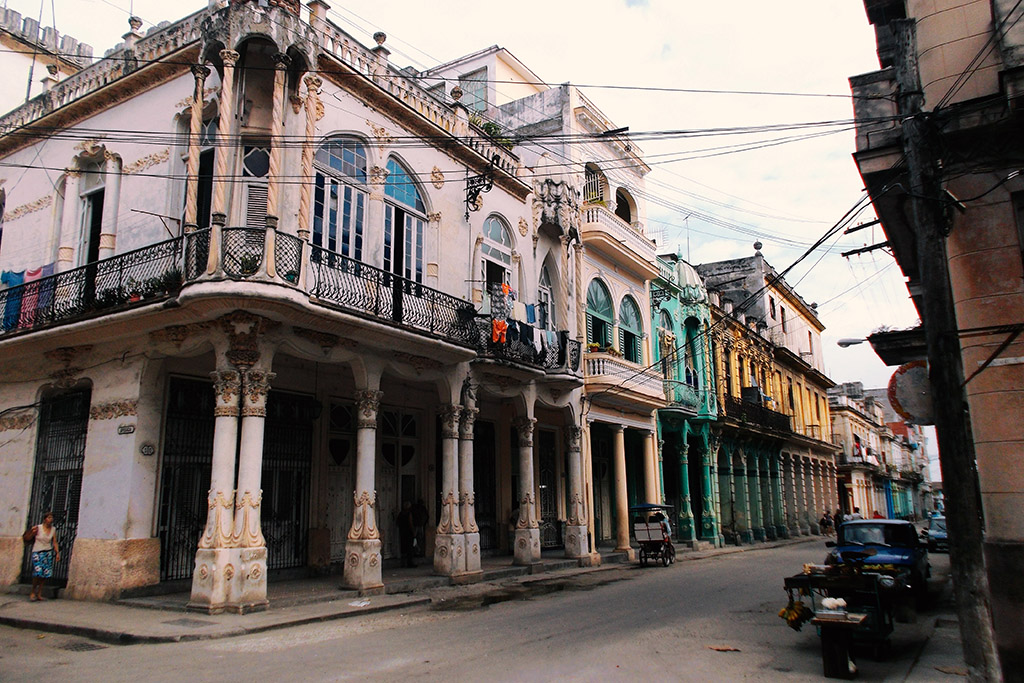
Talking ’bout Catalans in Cuba. Due to economic misery in Spain, since the beginning of the 19th century, many Catalans came to emergent, wealthy Cuba as immigrant workers. I highly recommend reading on the subject of Spanish migrants to Cuba Miguel Barnet’s novel Gallego.
To learn more about Catalan Modernism, just hop over to my posts on Antoní Gaudi and the beautiful city of Barcelona.
Vedado
Vedado’s heyday began in the 1920s and lasted into the 1950s. More than in other neighborhoods, Art Deco elements determine the architectural style. Also, some skyscrapers bear witness to the US-American impact during the heyday of Vedado. Many of the old casinos and nightclubs from that era are in this area.
One of the most important buildings in Vedado is the Hotel Nacional, built in 1930 in the neoclassical style. Due to its eventful history and glamorous guests like Ernest Hemingway, it is considered a national monument.
Another legend is the Hotel Habana Libre. This former Hilton was Fidel Castro’s headquarters during the first months after the victory.
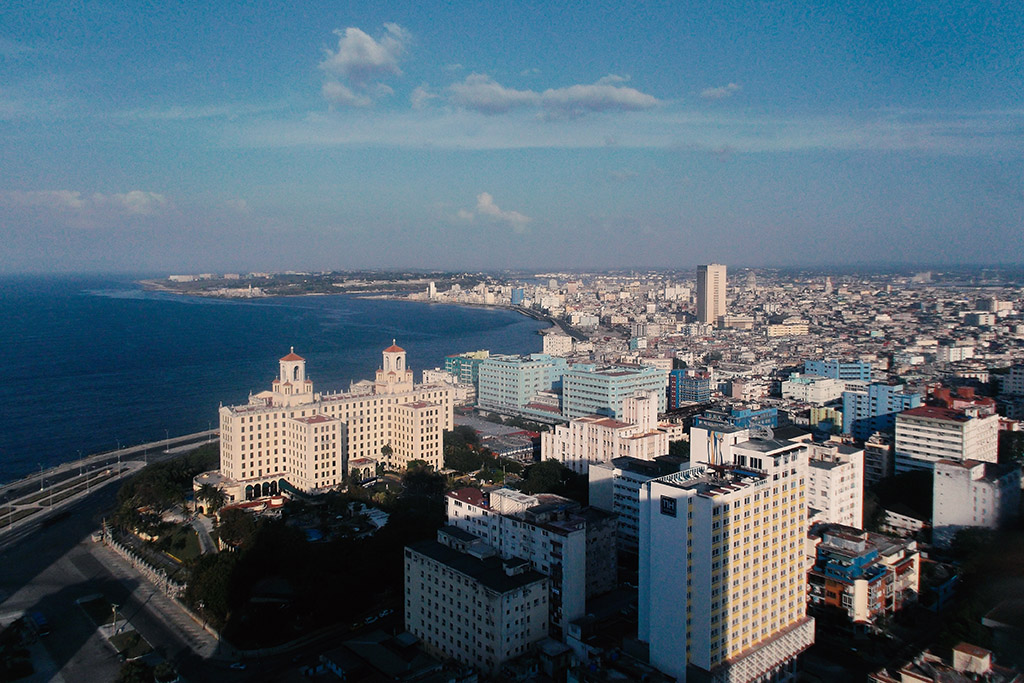
Actually, one of the architectural atrocities is the Edificio FOCSA. This 121 meters high skyscraper was built in the mid-1950s. There are apartments and stores and two radio stations. But most of all, there is a restaurant and a bar all the way up. Since these are government-owned businesses, prices are pretty civil. The mojito with your million-dollar view is only 3,50 CUC.
To see more of the mostly more modern sights in the Vedado district, I recommend going on the hop-on-hop-off tour #2. Around Vedado, it makes actually sense to take the bus. The area is pretty widespread, hence, walking would be unnecessarily time-consuming.
I’m introducing these reasonably priced tourist buses further below.
Plaza de la Revolución
One of the Vedado’s most prominent landmarks is the Plaza de la Revolución, the Revolution Square. Next to a 142 meters high obelisk, another statue of José Martí honors this great Cuban poet and hero of independence.
Around the square are austere government buildings dating from the years before the revolution. The most photographed one is certainly the Ministry of the Interior because of a mural of Che Guevara made of steel.

(Photo: Gorupdebesanez, Plaza de la Revolucion 01, cropped 2:3, CC BY-SA 3.0)
On May 1st, millions of people are coming from all over the country to attend the May celebrations.
Not far from the square is the Cementerio Cristóbal Colón, the largest cemetery in Latin America. Cuba’s oldest University of Havana is also based in this neighborhood.
The Vedado’s busiest street is Calle 23, also called La Rampa. It is a popular gathering place with popular spots like the Yara cinema, various parks, and the famous Coppelia ice cream parlor.
Fresa y Chocolate
The Coppelia ice cream parlor is one of the main locations the great Cuban movie Fresa y Chocolate was filmed.
However, even more famous is the building that today houses the Paladar La Guarida. So after having seen the movie Fresa y Chocolate, I was like those hardcore fans that come to Dubrovnik because of Game of Thrones. I had to see everything related to that movie!
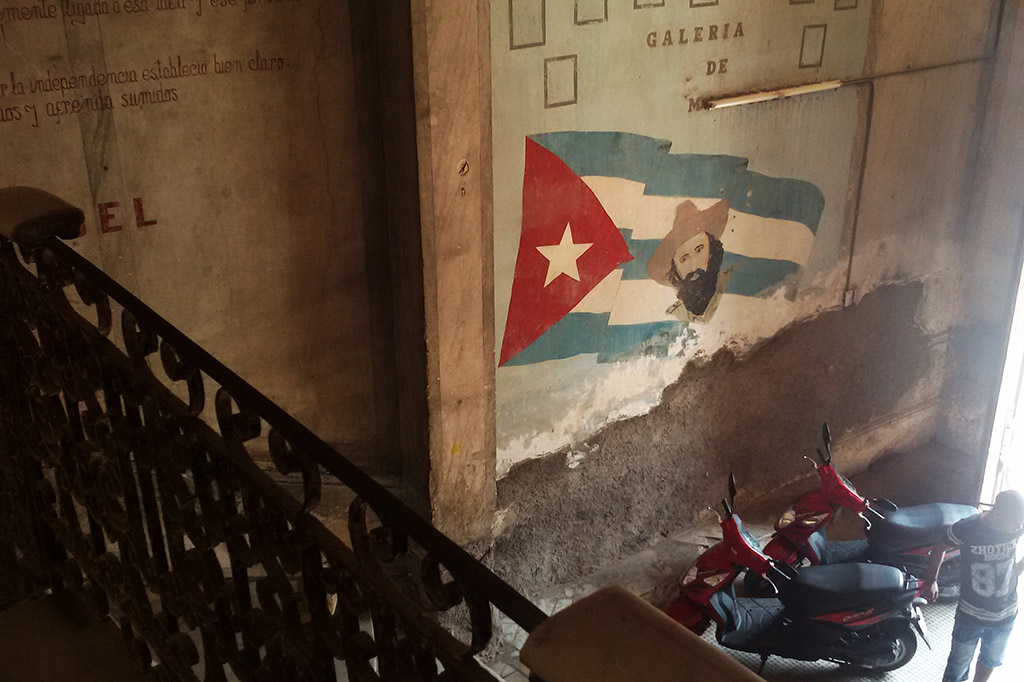
Fresa y Chocolate, hence, Strawberry and Chocolate, is a film by Cuban director Tomás Gutiérrez Alea from 1993. It deals with the friendship between David and Diego, two very different men, played by Jorge Perugorría and Vladimir Cruz. José Lezama Lima, who the homosexual artist Diego quotes as one of his favorite writers in the movie, was actually the inspiration for his very role.
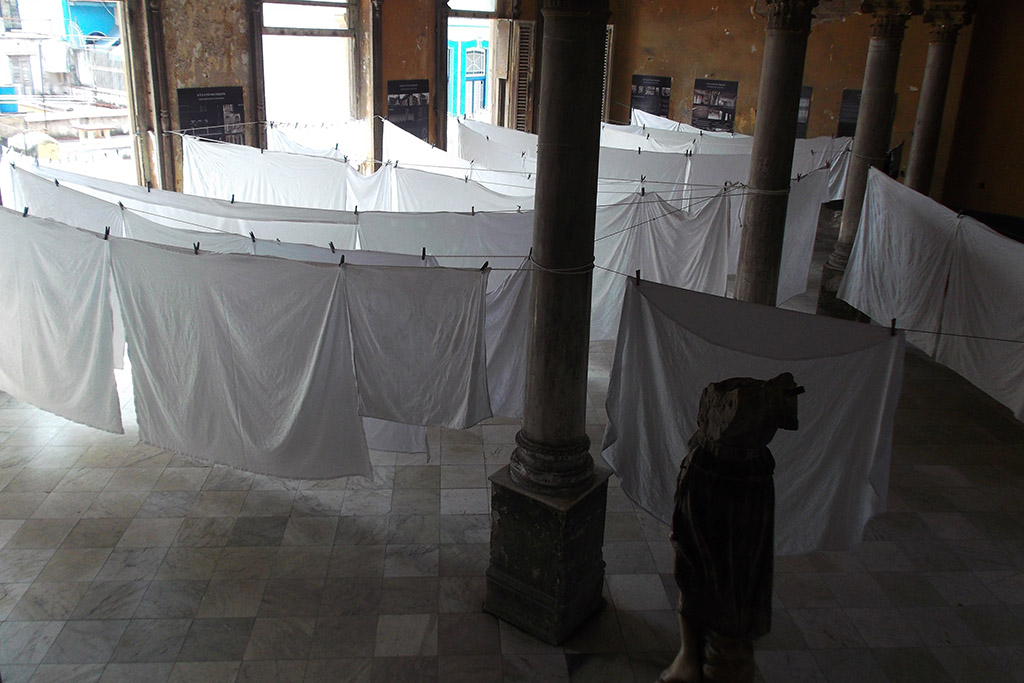
Well, and the apartment where Diego lives in the film is in reality the Paladar La Guarida. Supposedly, one of the city’s most exclusive restaurants.
La Guarida
So I actually made an online reservation a couple of weeks before coming to Havana. This allowed me to get a table and fork over the equivalent of a Cuban teacher’s monthly income simply to have lunch. A nice lunch, but still.
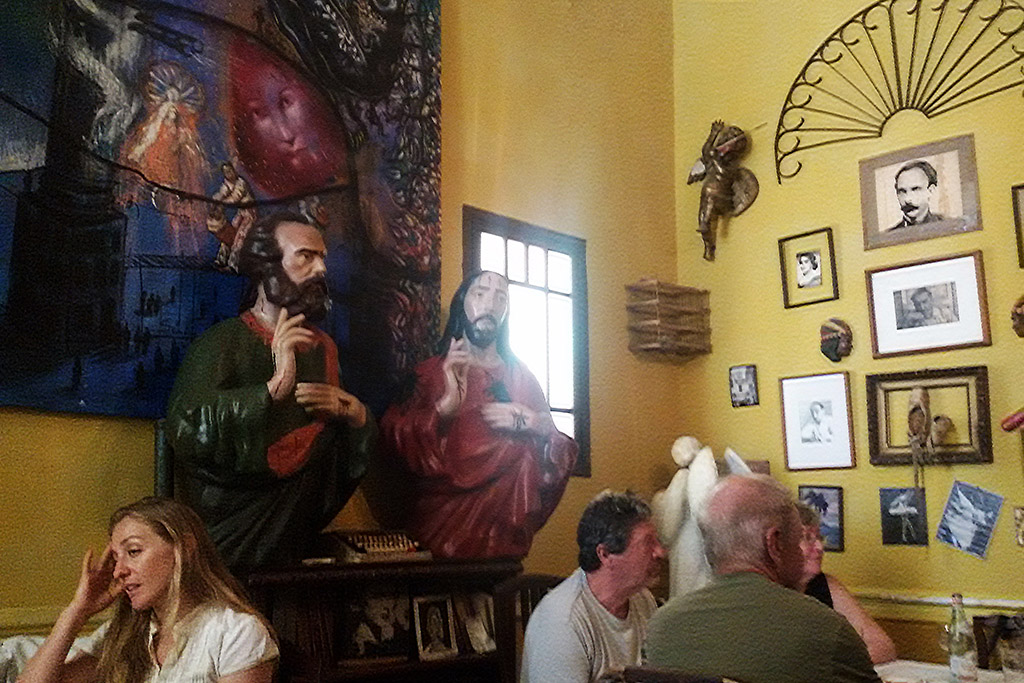
If you also want to waste money like an overexcited teenager, here is their address:
La Guarida
418 Concordia
Havana
Phone: + 53 – 7 – 8669047
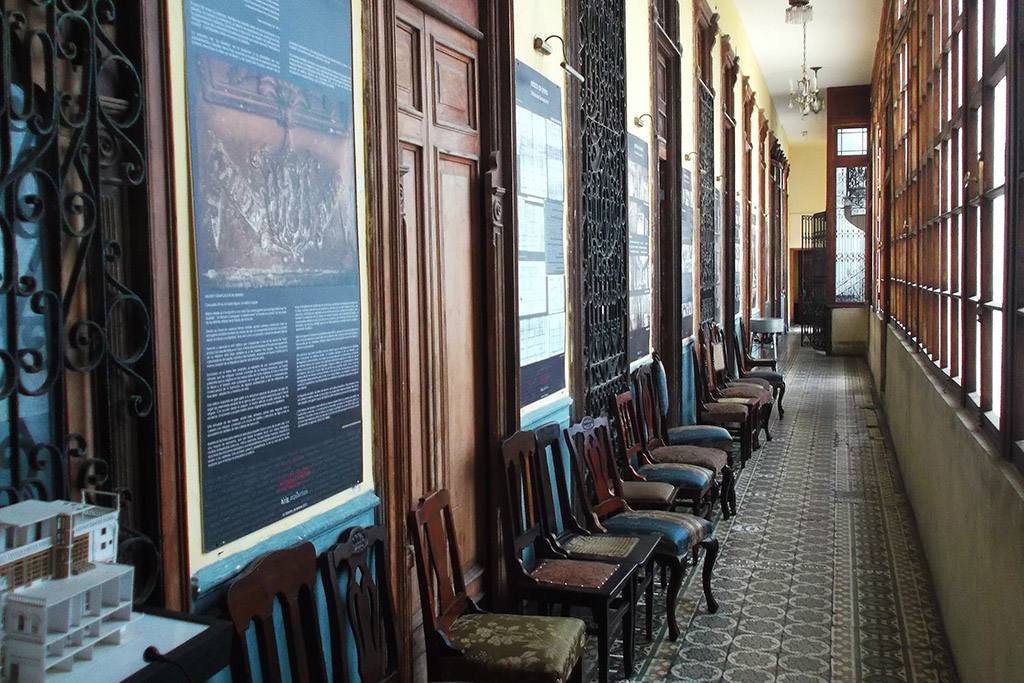
They are open daily for lunch from noon to 4 p. m. and for dinner from 6 p. m. to 11.45 p. m.
Make sure to have a reservation.
La Coppelia
The movie’s two main protagonists met for the first time at the Heladería La Coppelia – hence the movie’s title.
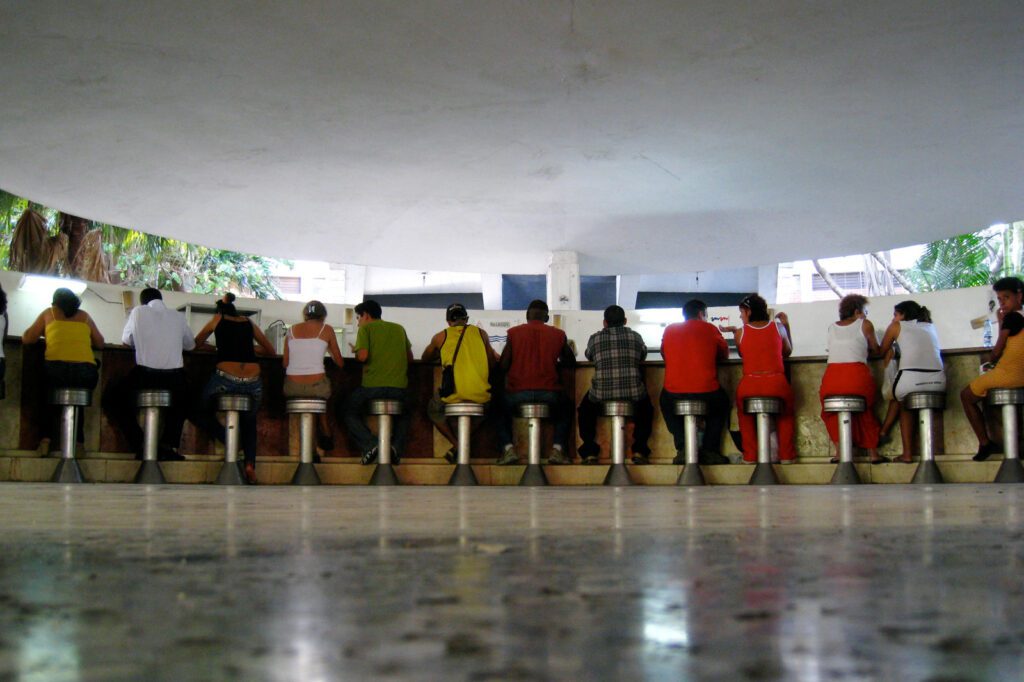
(Photo: BitBoy (Flickr user), Coppelia4, cropped 2:3, CC BY 2.0)
This parlor is also known as La Catedral del Helado and was named after a ballet. For Habaneros – and cineasts, obviously – it is an iconic place….and with about 1,000 seats one of the world’s largest ice cream parlors.
Heladería La Coppelia
2111 Calle L
Havana
The ice cream parlor is open from Tuesday to Sunday from 10.30 a. m. to 10 p. m.
The World’s Cheapest City Tours
Of course, you can fill two to three days with cheesy pseudo-sultry Caribbean “Cuba in the 50s”-activities like being chauffeured up and down the boulevards in one of the old American street cruisers. And if that alone isn’t tacky enough, they now have pink painted ones with hello kitty on it. I kit kid you not!

Besides the fact that I’m not so fond of Kitty, I also find it a bit obscene to pay the equivalent of an average Cuban monthly income for one hour in this tacky vehicle.
Beach By Bus
I prefer the hop-on-hop-off buses that you can board at the Parque Central. They bring you conveniently to all the places of interest. Still, to avoid major disappointments, look at them as means of transportation since the explanations are….expendable.
There are currently three bus routes in and around Habana. The T1 line runs between Parque Central towards Plaza de la Revolucion, Vedado, Centro Habana, and Habana Vieja. Certainly, an interesting line with which many places worth seeing can be reached.
The T2 line connects the Plaza de la Revolución with the Vedado and Miramar and runs to the Hemingway Marina.
If you want to get away from Havana’s hustle and bustle and hang out on the beach a bit, you can take the hop-on-hop-off tour T3 to the Playas del Este. The coach leaves every 30 minutes. I got off at Tropicoco and had a great time.
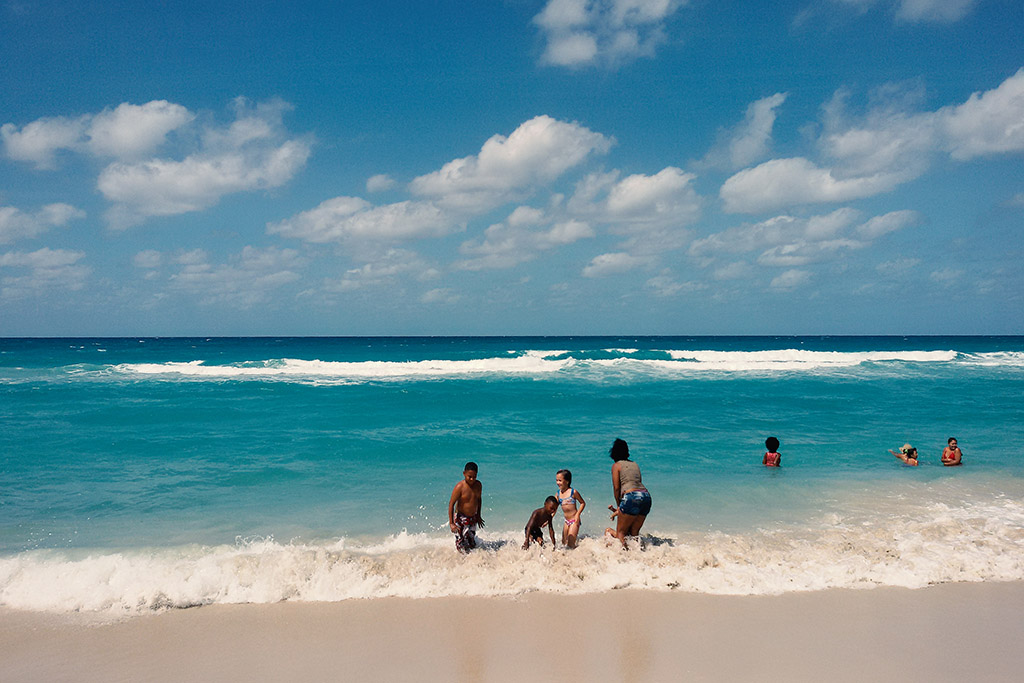
These beaches east of Havana’s center are nice and clean and not overcrowded.

The day ticket costs 5 CUC for line T3 and 10 CUC for lines 1 and 2 and allows unrestricted travel on the respective line.
The buses run relatively reliably according to the timetable. The departure times are noted at the stops. They are crossing at their starting point at the Parque Central in front of the Hotel Inglaterra between Habana Vieja and Centro Habana.
Sometimes you have to wait a long time at Parque Central, the queues for the two lines are sometimes enormous. There is also little shade, so I recommend good sunscreen …
Practical Information
How to Get There
International Air Travel
José Martí International Airport, located 17 kilometers south of Havana’s city center, is Cuba’s main international and domestic gateway. There are flights to other Caribbean islands, to Central and South America, to Canada, Europe, Africa, and Asia.
Individual travellers will have to take a cab from the airport to downtown Havana. This takes approximately half an hour and costs 20 to 25 CUC. Often, you can negotiate a far better price when you go to the domestic arrivals. But decide for yourself if ten bucks are really worth the hassle – especially after a long-haul flight.
You can read more about this topic in my post Keep Calm And Travel Solo.
Domestic Air Travel
There are currently flights between Havana and Nueva Gerona, Holguin, Santiago de Cuba, and Baracoa.
Here, too, I recommend buying tickets as early as possible. In any case, at least six weeks in advance and possibly on the website www.cubana.cu.
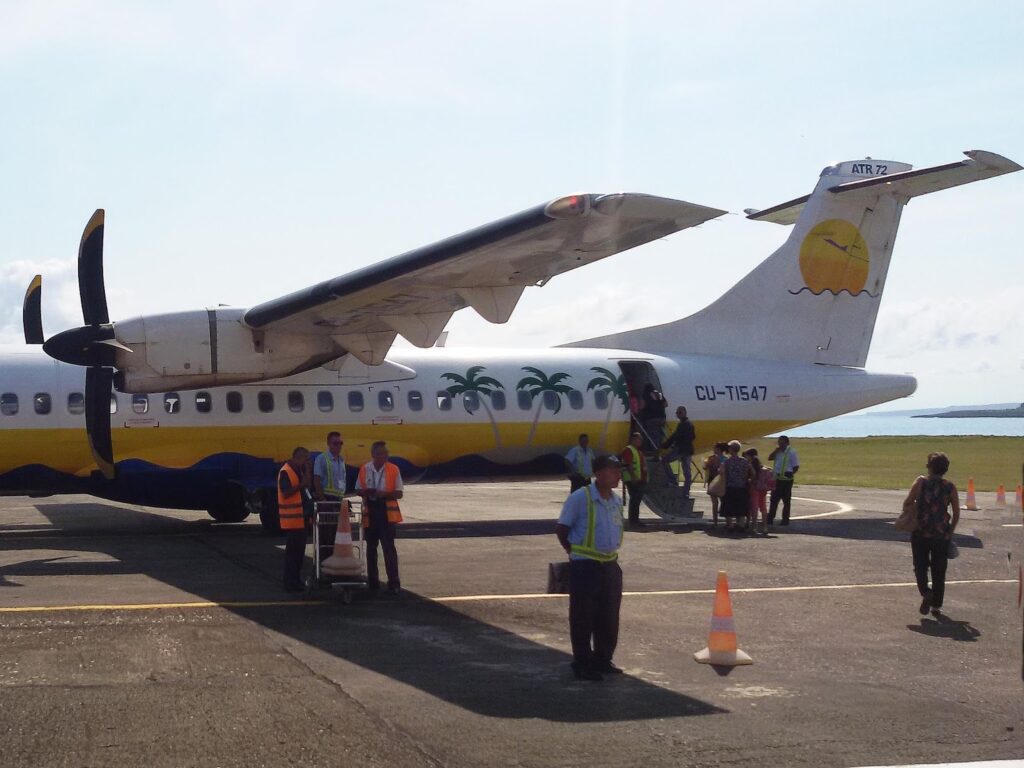
Booking tickets in Cuba at short notice is difficult and usually not possible. You can try to book a flight at Havana or Santiago de Cuba at one of the larger Cubana offices.
A more convenient option to obtain a ticket is a local travel agency in Cuba, for example, Havanatur with branches in many larger hotels.
Still, booking tickets online way in advance is your best bet.
Please keep in mind that Cubana tends to have massive delays. Don’t even think about same-day connections to your international flights. Always allow at least 24 hours, or better still two days.
By Bus
Cubans travel by basically every container with wheels. Old buses, lorries, collectives, you name it. Obviously, you can try that, too. But firstly, it can be really time-consuming – and I’m talking hours. And then I also find it a bit unfair towards the locals who depend on this slow, uncomfortable, and most of all very cheap of travelling. Mind you, you are taking their seat. You can afford another service, they can’t.
Viazul
For people like you and me, there is Viazul. Viazul has a fleet of buses manufactured in China so the seats are really small and space between rows is minimal. Nevertheless, they are the most reliable terrestrial way of travelling all over Cuba since it caters to basically all towns and cities. I did all my travelling by Viazul, and besides the limited personal space on the bus, it was totally fine.
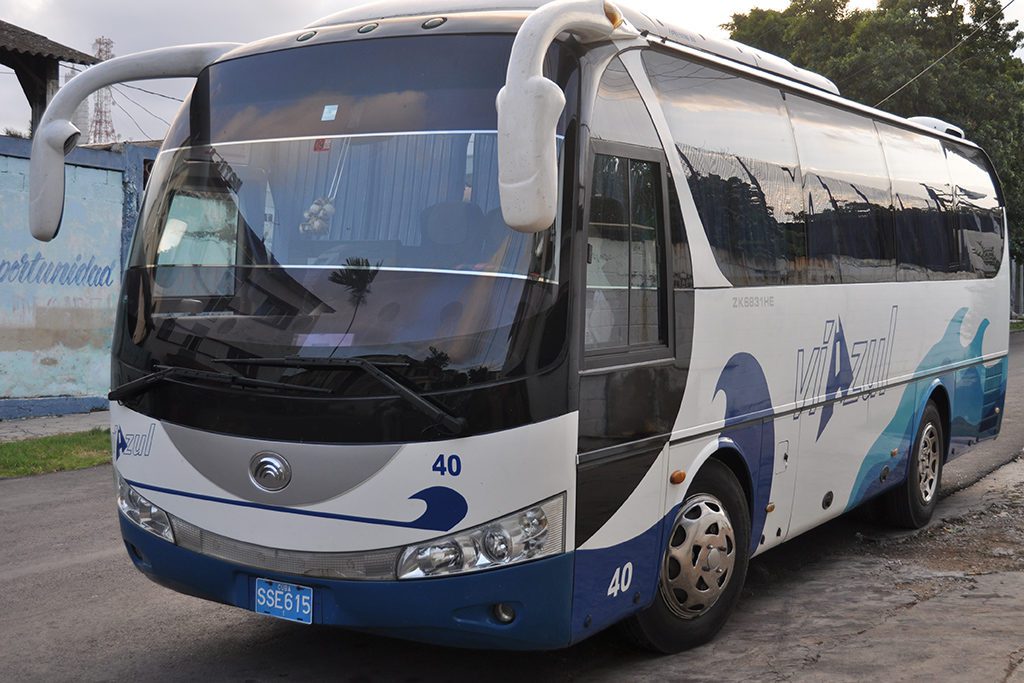
(Photo: Escla, Viazul bus, cropped 2:3, CC BY-SA 3.0 )
The fare includes only 20 kilograms of luggage. This will be weighed and you’ll be charged.
Since Viazul is not only very popular with tourists, the capacities tend to be far behind the demand. Hence, long-term planning is highly recommended. You should put together your itinerary and route about two to three months before your trip and purchase all your tickets on their website.
To give you an idea, the trip from Havana to Vinales is 12 CUC, to Trinidad 25 CUC, and to Santiago de Cuba 51 CUC. The latter trip, however, takes about 17 hours.
How to Get Around
Havana has an extensive bus system that has been greatly expanded and modernized in recent years. Nevertheless, as everywhere in Cuba, public transport fares are extremely low, but tourists usually pay a higher price.
Havana has a MetroBus system with buses running on 17 routes through the entire city area.

Basically, all public means of transportation are jam-full. Therefore, most visitors rather rely on cabs and coco taxis. However, these vehicles are far more expensive than local buses or colectivos. However, according to my experience, it’s mostly drivers who will dupe you.
You can avoid this at least a little bit if you ask locals how much your trip should normally be and then negotiate with the driver beforehand. However, don’t feel deceived if some locals obviously do not want to support you. Don’t forget that in a precarious system like the Cuban society, people need to stick up for each other. Solidarity is crucial, I scratch your back, you scratch mine. And they don’t necessarily include foreigners in this system. And to be honest, why should they? Just think for a moment about the fantastic economic difference – and fantastic not in a good way.
Where to Sleep
Normally, hotels in Cuba are run by the government. Consequently, the employees are not so very service-oriented. Therefore, the best way to rest your head is to book yourself into a Casa Particular.

A Casa Particular is someone’s private home licensed to rent rooms to tourists. Since the government has a firm grip on these private businesses, all the rooms are nice and meet international standards. The owners have to pay a certain amount to the government whether they rent the room or not. Therefore they are keen not to leave rooms empty. Hence, the service is really good. It’s also advisable to eat not only breakfast but also another meal at the casa. Believe me, the food is always better than what you get at a – again: government-run – restaurant.
The only exception might be if you eat at a Paladar – we get to that in the section below.
Where to Eat
I mentioned it above: Eating in a privately run house is practically always much better than at a restaurant.
A legal, privately run diner is called Paladar. It can vary from a single table in a back room of a private home to a large, fancy, and pricey restaurant like La Guarida that I’m introducing above.
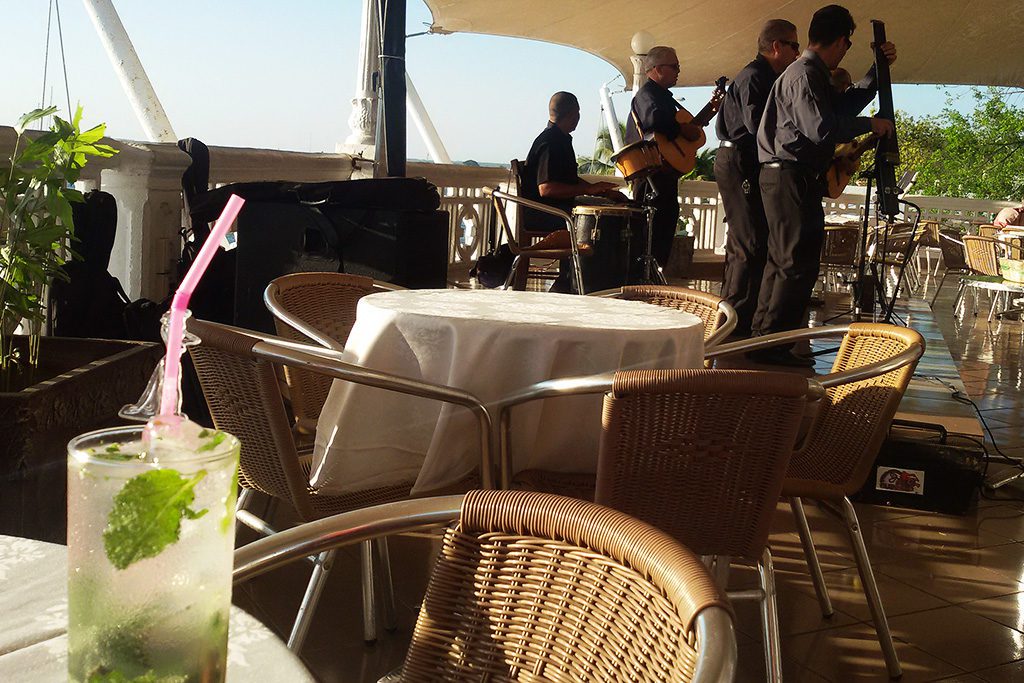
Not only the food is much better at Paladares, but also the service. Since the owners have an interest to get and keep customers, they are friendly and attentive while waiters at the regular restaurant rather slack.
Cash and Cards
Until the end of 2020, there were two official currencies: The CUP – Peso Cubano – and the CUC – Peso Convertible. The socialist island state has had this confusing dual currency system since 1994.
However, since the beginning of 2021, only the Peso Cubano keeps circulating. The exchange rate is 24 CUB to one US$. This unification of the currencies is expected to grant Cuba’s citizens equal opportunities and social justice.
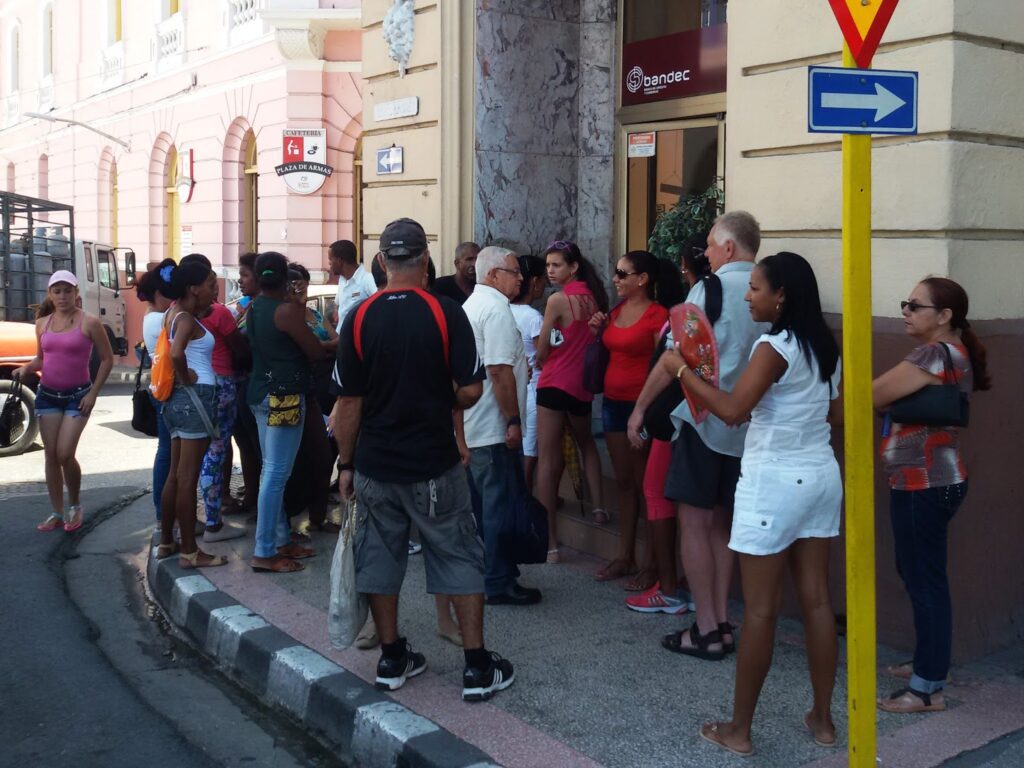
Already in July 2020, Cuba had abolished the ten percent tax on US$ purchases that had been in force since 2004. Since then, in some shops, certain products can also be paid for by card in US currency.
Since this novelty is still in progress, obviously, some prices in my posts on Cuba still quote the Peso Convertible CUC – as do many Cuban websites. I hope that they’ll correct their sites asap so that I can adjust the information on my blog. However, if you don’t want to wait: One CUC equals one US$, so that shouldn’t be a big problem, after all.
Language
Since Cuba was once conquered by the Spanish, to this date, Castellano is the official language.
Even if you have a great command of Spanish, in the first days, you might have trouble understanding everything since Cubans, obviously, have a peculiar accent.
If you want to learn some basic Spanish or just brush up on your knowledge, there are various apps and online tools. I personally like to practice with babbel.
Communication and Connection
Writing about phone and internet connections in Cuba is a real challenge. Because while I’m typing, things can be changing.
So here’s the status quo of the spring of 2021.
Since 2014, Cuba’s network capacities have multiplied. Before that, Cuba only had satellite connections.
The widespread expansion of Internet access began in the same year with the establishment of public WiFi hotspots in parks and squares. Today, there are about 1,000 across the country.
Prices were gradually reduced from 4.50 CUC to 1 CUC per hour. There are also several hundred public Internet cafés in the branches of the governmental communication company ETECSA.
First, you need a scratch card with access data. Theoretically, you can get it at all ETECSA branches and at street stalls. This being said, be aware that in touristy hotspots, queues at ETECSA can be insane. Also, scratch cards can be sold out.
It’s far better to try your luck in not-that-popular and busy places such as Cienfuegos, Santa Clara, and Camagüey.
Unofficial sales in the gray market on the street are still common and usually much faster. However, usually, they charge about 30% more.
The network is WIFI_ETECSA and you get access with any internet-compatible device.
There are Etecsa branches in Havana as well as another sales point where you can obtain scratch cards. On this page, you’ll find ETECSA’s complete list of hotspots. To narrow it down, you need to choose Havana from the dropdown menu Provincia and narrow the area down in the menu Municipio.
Map
This is an overview of the places I’ve introduced in this post
Havana was only the first spot on my visit to Cuba. However, to read about the other formidable places, go to the main post and take your pick! There you’ll also find valuable general information that will make your trip smoother.
Note: I’m completing, editing, and updating this post regularly – last in November 2022.
Pinnable Pictures
If you choose to pin this post, please use one of these pictures:
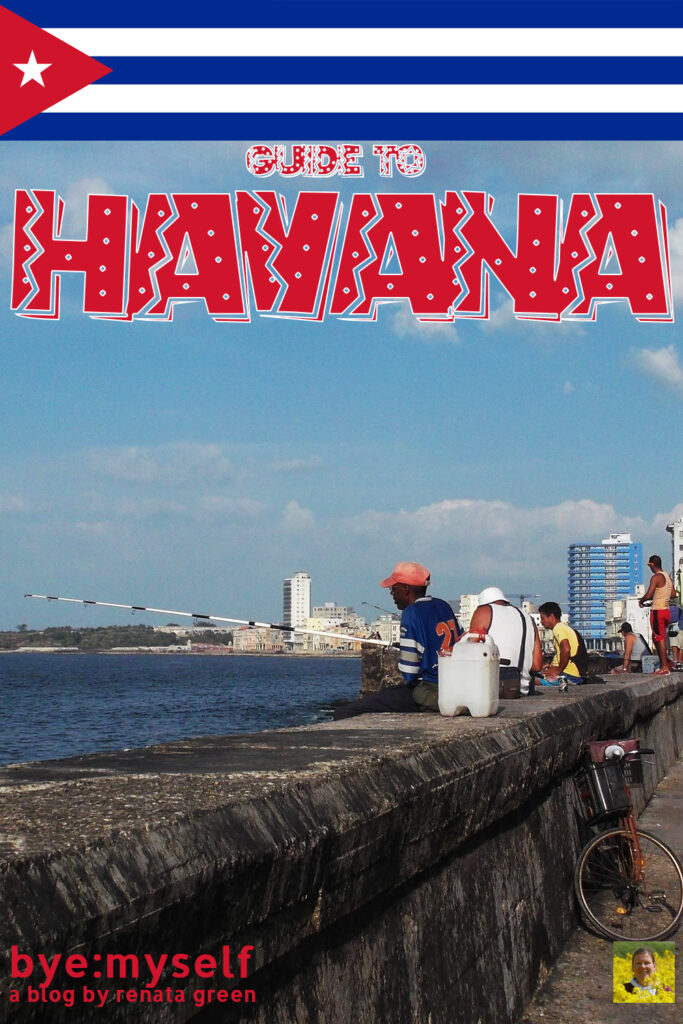

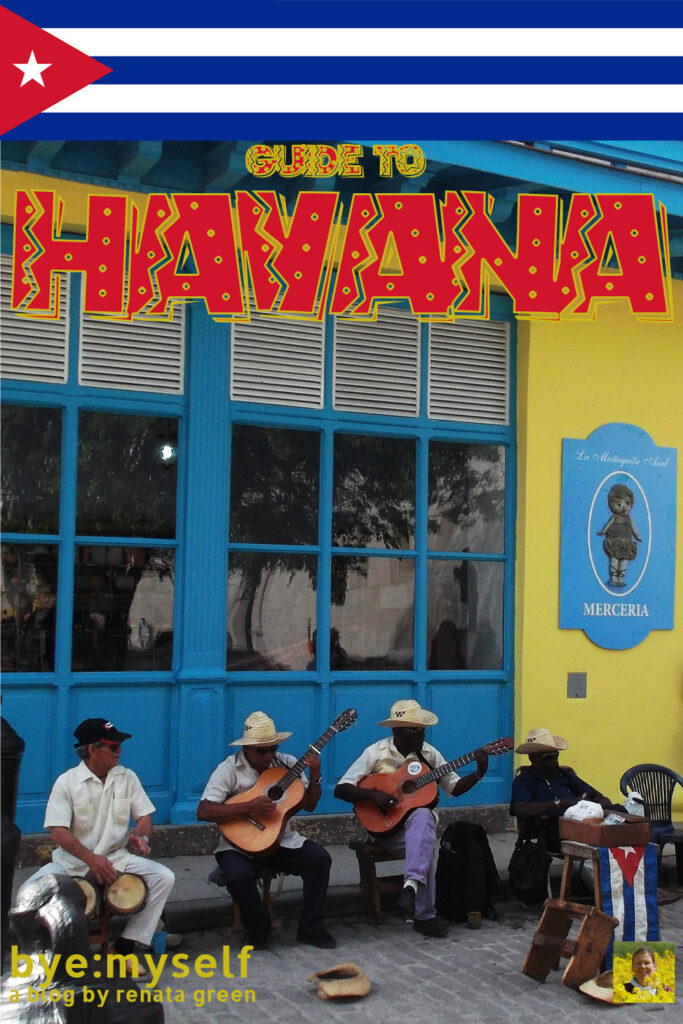

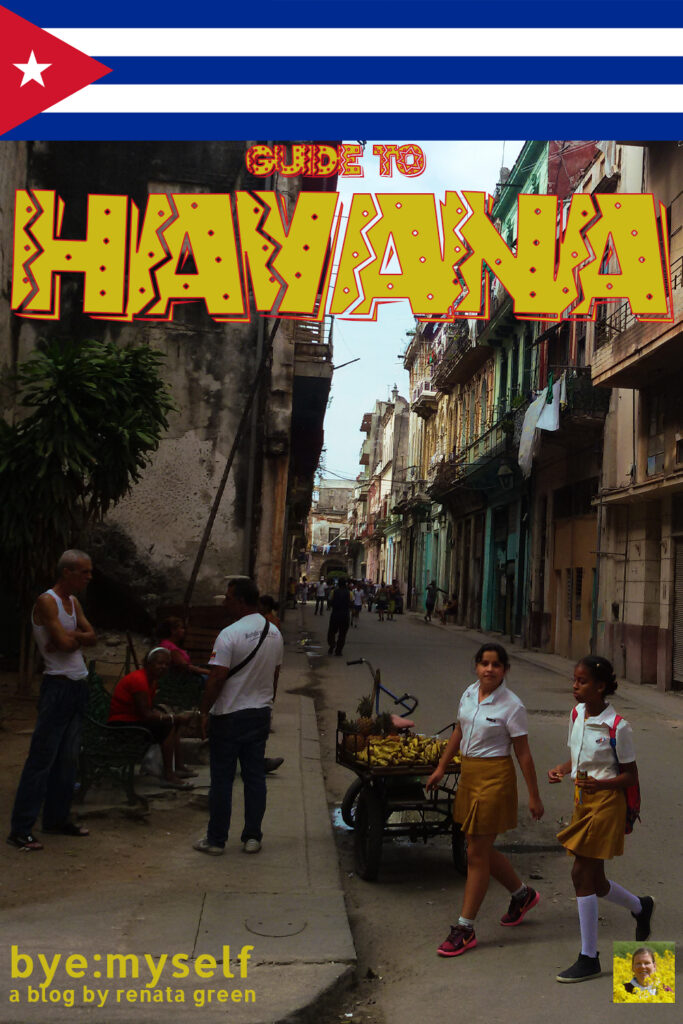

Did You Enjoy This Post? Then You Might Like Also These:
Grub First, Then Ethics – Brace Yourself for Cuba
Guide to VINALES – Cuba ‘s Rural Paradise
Guide to BARACOA – Cuba’s Hidden Gem
PLAYA SANTA LUCIA – Cuba’s Secluded Tropical Paradise
Guide to TRINIDAD – Cuba’s Colonial Fantasy
SANTIAGO – Capital of Afro-Cuban Culture
Getting a Haircut Around the World
Guide to CAMAGUEY – Cuba’s Modest Beauty
* This is an affiliate link, obviously. So if you book through this page, not only do you get the best deal. I also get a small commission that helps me run this blog. Thank you so much for supporting me!
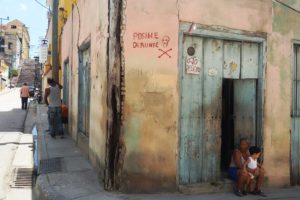
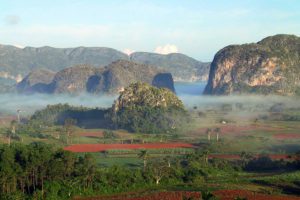
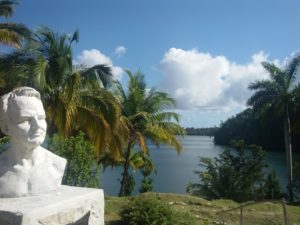
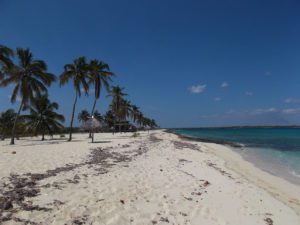

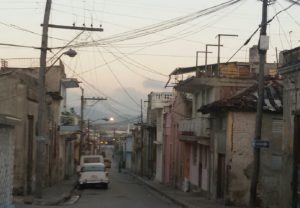


I really like your style – short and sweet with smile inducing twists and most importantly honest and informative! I can't wait to visit Havana to see all of it for myself.
It’s on my list of places I want to go to! I loved the photos you took. They look beautiful! I wish the parts don't fall off and the government takes more care of the city. The city with such history is interesting – it should be preserved.
I love how honest you are. Normally, all you read about is how wonderful Havana is. But, I have also heard some horror stories from friends who have gone about tourists being taken advantage and deceived. Your photos are beautiful and the city does look beautiful notwithstanding the rot!
A yes, Havana. I've been there few times and part of me always laments over the crumbling and decaying state of what once must have been glorious. Thankfully we didn't see anything actually fall, but that doesn't surprise me at all. I enjoyed reading this post. It made me smile and brought back some memories.
Thank you, glad you like it. It made me smile writing it, too 😉